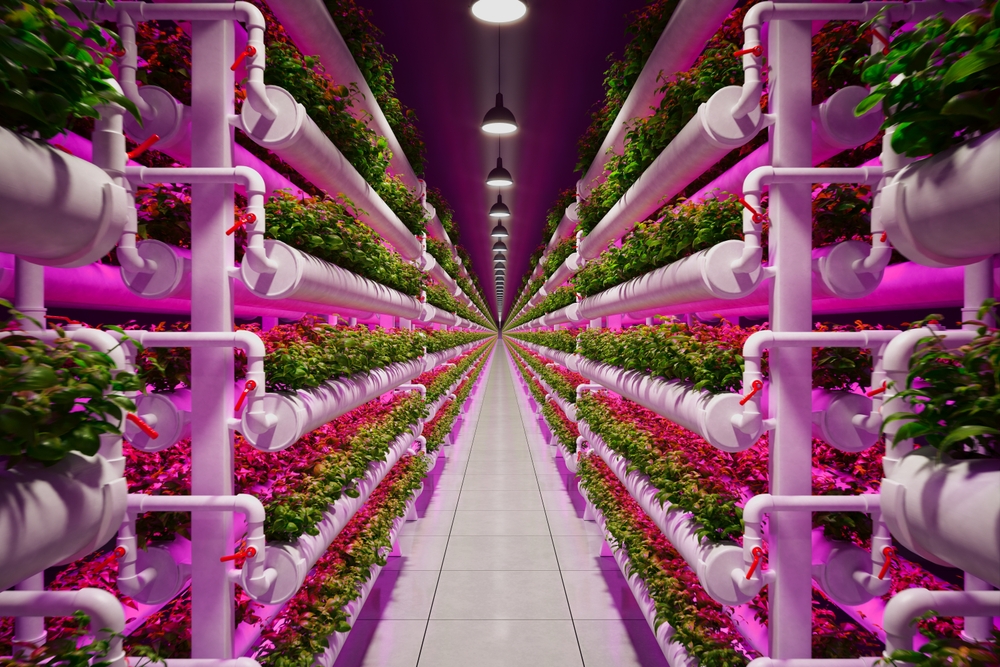As the climate crisis accelerates, food production is exposed to unpredictable weather, reduced water supply and increased pressure from degraded soils.
The UK, which imports most of its lettuce during the winter, faces certain risks as Southern Europe tackles the rise in drought. Against this background, vertical farms are defended as a technological answer to food insecurity.
By cultivating crops indoors under carefully controlled conditions, these farms can deliver fresh produce year-round, using much less land and water than traditional farming.
However, a new study from Surrey University reveals complex reality. The vertical farm boasts dramatically higher yields and impressive water savings, but also carry heavier carbon footprints than lettuce grown outdoors.
The findings raise important issues for the UK. Can vertical agriculture evolve quickly enough to become both a safe and sustainable food source in times of climate uncertainty?
Vertical farming explained
Vertical farming is a method of growing crops indoors with stacked layers, and often uses hydroponics or aeroponics instead of soil.
These farms rely on a carefully controlled environment of temperature, humidity, light and nutrients to maximize growth while significantly reducing land and water use.
Instead of vast fields, crops such as lettuce can often be grown in warehouses and skyscrapers near major cities.
Advocates argue that this can reduce transport emissions, reduce reliance on imports, and help countries like the UK ensure a reliable supply of fresh produce.
Record yield and reduce water usage
This study compared vertical agriculture and traditional British and Spanish lettuce production. The results revealed a staggering difference in productivity.
Vertical farms delivered about 97 kilograms of lettuce per square metre, compared to just 3.3 kilograms from the field farm.
Water savings were also important. Spain’s irrigated fields required 0.9m³ per kilogram of lettuce, compared to up to 7.3m³.
As Southern Europe faces worsening droughts, this efficiency is essential, and the UK relies heavily on imported lettuce during the winter.
Carbon dioxide emissions issue
Despite the distinct benefits of yield and water use, vertical farms are currently lacking when it comes to greenhouse gas emissions.
This study found that vertically grown lettuce produces 0.93 kilograms of Co2 equivalent per kilogram, compared to 0.57 kilograms from a UK field farm.
Much of this impact comes from the energy needs of artificial lighting and climate control systems, as well as the use of jute fiber plugs for growth.
Even with renewable electricity, the energy intensity remains higher than that of open field agriculture.
Innovation opportunities
Researchers suggest that better technology and materials can reduce the environmental costs of vertical farming.
For example, switching from jute plugs to alternatives like coconut coia can reduce your land footprint by more than 95%.
Similarly, improving energy efficiency and strengthening integration with renewable electricity could make vertical farms much more sustainable in the long run.
If these hurdles can be overcome, vertical farms will help the UK reduce its dependence on imports, free farmland for ecological recovery, and provide a year-round supply of fresh vegetables.
Michael Gargaro, a graduate researcher at the Center for Environment and Sustainability at the University of Surrey, added that he is the lead author of the study.
“Our research shows that this technology can provide much higher yields and reduce water use, but it now comes with higher carbon costs. The challenge shows that vertical agriculture can be more energy efficient, better integrated with renewable systems and become a truly sustainable solution.”
The future of food security
With 95% of UK winter lettuce currently imported from Spain, vertical farms can play a pivotal role in building resilience to climate change and global supply chain disruptions. But their future success depends on solving the carbon challenge.
This study highlights an important balance. Vertical farms offer extraordinary productivity and resource savings, but without breakthroughs in energy use, they risk trading one environmental problem and another.
For now, vertical agriculture may not be the most environmentally friendly option, but innovation and investment can potentially be the cornerstone of sustainable agriculture decades away.
Source link

